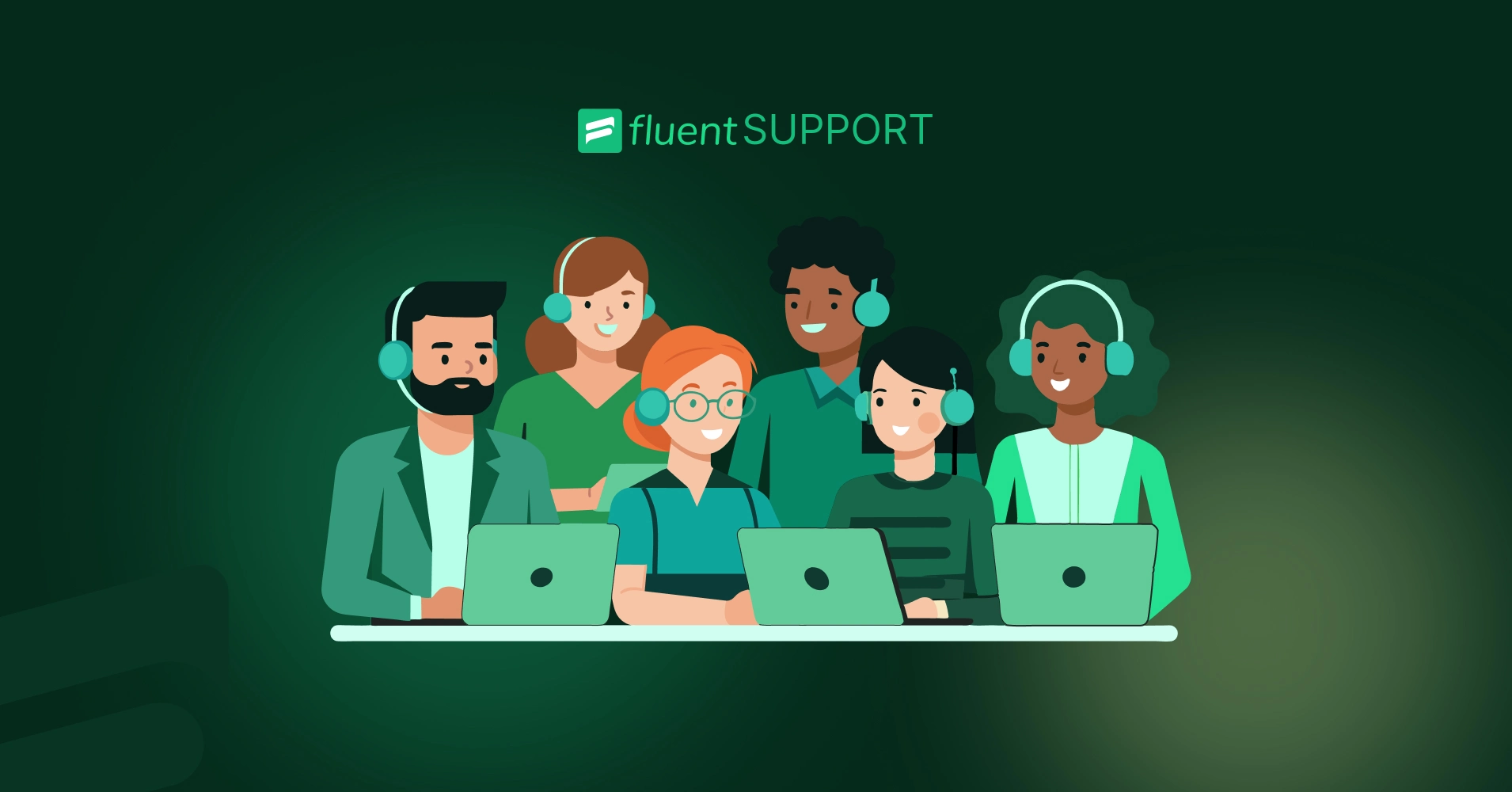
How To Build A Customer Support Team – Complete Guide
Good customer support can elevate any business; great customer support team helps increase revenues in the long-run and bad customer support can make any business bankrupt.
Surely you need marketing to reach your target demographics and a sales team to ensure you have consistent sales. But when your customers face problems, where should they go for their solution? What process do you have to use to tackle angry customers? Eventually, this will be a key factor in maintaining your business’s goodwill.
That’s where the customer support team works wonders. Customer support teams handle everything related to customer relations and keep customers’ happiness higher. Building an efficient customer support team is an obvious priority of any customer service strategy.
Building a customer support team from scratch needs a process to build the overall foundation of your customer service. Excellent customer service varies from business to business, and most companies fail to do so because of their lack of understanding of the customer support process.
In this article, we’ll cover why you need a customer support team, what makes a great support team, how to build a customer support team, what tools you should use, and how to optimize these tools for your business needs. Take it as a full-free course on building a customer support team from the beginning. You’ll learn the ins and outs of the process and what structure you should follow based on your business.
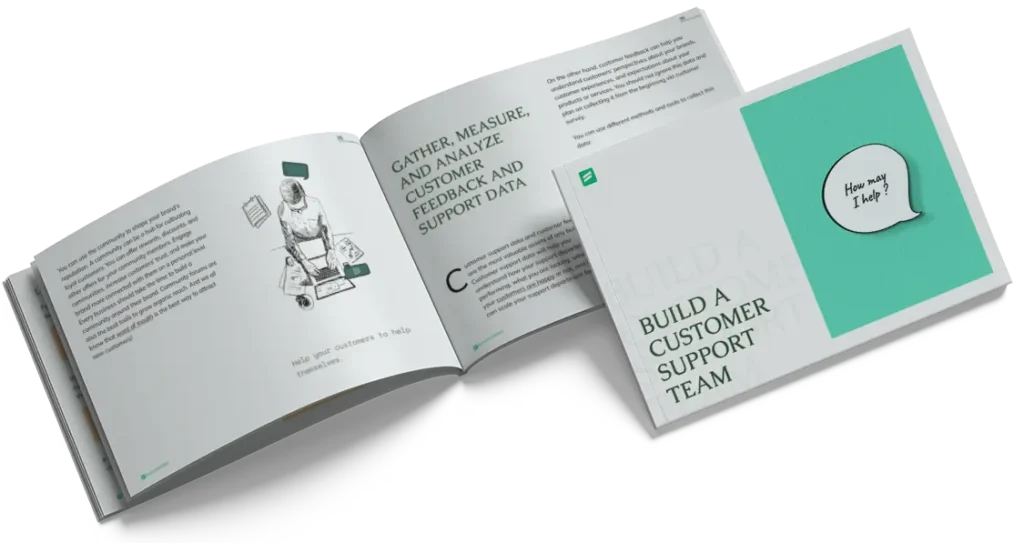
If you already have a customer support team, you can still follow these solid steps to ensure your customer service strategy is on the right path. If you are new, let’s get started with why a customer support team is an essential part of your business.
Why should you build a support team?
A customer support team is a tribe of empathic people who dedicate their time and effort to solving customer problems and helping them achieve success.
Not all businesses need customer support, but it is essential for those whose marketing promise depends on excellent after-sales customer support. After-sales support is a great tool to build long-term customer relations. Even pre-sales support is widely popular among companies nowadays. Pre-sales support helps a customer make their purchase decision, create a seamless customer onboarding process, and help them use your products after payment immediately.
Both pre-sale and after-sale support can be run by one customer support team. Now, as a business, you should ask yourself, “Do I need a customer support team right now?”
It is important to answer this question because often business owners make this mistake, not considering making customer support a priority from the start. Then, when business gets bigger, customer inquiries flood in, and they get overwhelmed with little time to provide solutions to all customers.
No matter what industry you are in, always think ahead a few years. Ask yourself:
- How can a support agent save me time?
- How much time will be saved for me to do things I’m capable of?
- How many expected customer queries will my business get after the official launch?
- Do I need human agents, or are chatbots enough?
- Or do I need human agents in 6 months?
- Can I automate most customer inquiries? If yes, then how can I do it?
- Am I capable of handling these amounts of customer inquiries, or do I need to hire?
These are some initial questions you must ask yourself before launching your business. If you find most answers telling you that you need more hands in handling customers after-sales, it is inevitable that a customer support team is required for your business. Either you are an e-commerce store, agency, service provider, or consultancy, you should invest in customer support from day one.
Now that you know the benefits of investing in customer support, let’s help you define what excellent customer support is for your company.
Define “excellent customer support” for your business
Without a standard, it’s hard to measure success. Before building a customer support team, you need to set your standard for great customer support.
What do you mean by “great”? Or what does “excellent customer support” mean to you by definition?
Most companies provide customer support. But not all are the same. Some differentiate themselves by going the extra mile and going to great lengths for customer satisfaction.
Think outside the box about how you can differentiate your customer support from that of your competitors. What is one thing you are willing to do that your competitors are not thinking of doing?
Decide what type of service quality you are going to provide. And how are you going to ensure the results? Get your whole company behind the idea of your great customer support. It is important to ensure that your other teams understand the value of excellent customer support. It will help develop a company-wide customer-centric mindset and sophisticated team-wise collaboration.
When you clearly define excellent customer support, you can develop guidelines for your support team. You can select specific customer support metrics to measure their success.
We will discuss more guidelines and support metrics later in the structure and process steps. Now let’s dig into how you can make sure your customer support team conveys your brand and company value while interacting with customers every day.
Align your customer support with your brand and company values
We talked a lot about the tone of the brand’s voice in customer service previously. It means how you follow the same tone of voice in your copywriting, whether it’s your company’s website, brand brochure, other marketing materials, or customer service. Your brand tone of voice sets your brand personality. Your brand personality is essential to attracting your target audience.
Every company has values at its core. Values keep the business operations in check. Like when Google founders incorporated Google Inc., they came up with 10 main values Google will always follow. One is, “Do the right thing; don’t be evil.”
These company values helped Google set their overall business policy and shape their brand personality.
What are your company’s values? What is your brand’s tone of voice?
When you clarify those two, you can easily implement them into your customer support policies and strategies. If your company wants to be known as a customer-centric company, then your value should reflect that customers are your first priority.
This value should dictate your excellent customer support definition, and your team should deliver on that promise. Remember, a customer service team can only deliver great customer service when, as a company, you make it happen.
Make sure, as a company, all of your teams are onboard about customer service policies and strategies. Customer support should not be a standalone department; it should seamlessly interact with other teams like the marketing and sales teams to provide customers with fast, reliable, and quality solutions.
Consideration for building a support team
How your employees interact with your customers sets the overall perception of the customer. Customers’ perspectives may change in a single interaction, no matter what your team members’ intentions are. Your team members need to understand that from the beginning.
Your customer service team should reflect your brand, your values, and your tone of voice. It takes more than positive interaction to achieve this; companies should have their goals, vision, and mission align with their strategies. Then you can build your customer service team on top of it.
Find out where your customers are and which channels to focus on for customer support.
The best way to provide great support is to know where your customers hang out and be there. Get more data on your customer demographics; analyze what channels they use more and what they are using more to contact you.
Is this your official email address? Your helpdesk portal? Live chat? Or your social media channels?
Many companies make the mistake of providing support on every channel before scaling up their customer support team. Ask yourself first:
- Are you ready to provide customer support on every channel?
- Can your team handle that much pressure?
- Are your team members trained for every channel?
- Is that okay for your team members’ mental health?
The answers are important to ensure your customer support team’s operation and efficiency. Find out what your business and customers need for support. Answer these questions:
- What is the standard of communication for your industry?
- Does your industry need face-to-face, online, or technical support?
- What primary communication tool do your customers use?
- What social media channel is popular with your customer demographics?
If your business serves older demographics, they are more comfortable with phone communication and, often, emails.
Younger generations like live chats, social media like Twitter, or self-help tools like knowledge bases and communities. Young demographics are comfortable using search engines, answer tools like Quora, discussion forms, Facebook groups, and Reddit to find the solutions themselves. Their short attention span requires quick answers.
You can easily cater to them by creating in-depth tutorials, customer support videos, documentation, and knowledge bases. You can also provide help desk and email communication for further communication.
Find out your customer demographics using which social media platforms most, and then start providing support from one or two. Do not spread your customer service team too thin. It will only frighten them; as a result, your customer will get inconsistent support, and customer churn will happen.
Take market data and analyze it. What are your competitors using to serve their customers? It is the easiest way to make sure you are on the right path. Now do whatever it takes to offer better customer service from them. Match the strength of your support team members with their preferred channels to provide quality customer support.
Review legal restrictions and examine necessary requirements
Now that you have decided on your support channels and mediums, it’s time to review legal restrictions and examine the necessary requirements. You should find the answers to these questions:
- Which country does your business cover?
- What rules do they have about customer data collection and use of this data?
- How are you going to follow the country’s law with your terms and conditions?
For example, the European Union demands GDPR compliance for every business. Consult with a legal expert when writing your business’s terms and conditions, disclaimer, use of user data, and other legal documents. Be sure to clearly make any legal requirements visible while onboarding new customers, because you don’t want to leave your customer in the dark about any policy changes in your customer support terms.
Point out potential legal troubles before offering customer service on various mediums and create systems for team members to tackle those when necessary. You can brainstorm different customer service situations and pain points and come up with solutions in advance to train your support team members. So when the actual event happens, they will know what to do or can manage related types of situations on their own.
Hire right people and build your team with right roles
Hiring the right agent for your customer support team is the key to quality support. It is crucial to find the right customer support agents, because they are the only part of your business that has the ability to influence your customers through one-to-one interactions.
Wrong people in any customer service team are the reasons for bad customer experiences. When you build your support team, you will have to appoint the right type of person who is compatible with your company’s values.
What type of person is best for a customer service job? The answers are:
- Empathic
- Active listener
- Problem solver
- Quick learner
- Technically skilled
Your right candidate knows what to do with responsibility and freedom. Empathy is a must-have characteristic you should look for while building your customer service team. If your agents can’t feel them in customer shoes, they will never understand customer fraustations. An empathic agent will actively listen to the customer and provide an exact solution to fulfill their immediate needs. They also know how to say no to customers professionally without upsetting them.
You can appoint support agents in-house or choose virtual support assistants to run your team. It depends on your business size, customer base, and daily incoming customer queries. A small e-commerce store may need 2–3 support agents to handle customers. You can manage it with a few virtual agents covering all time zones. But this can’t be done for a big business with lots of inventory or services and a huge customer base.
Choose which path is right for you and how you can scale if you need more agents to handle future customers. If you choose to build an in-house support team, you’ll need to clarify which roles and responsibilities your customer service team will take on.
You’ll need some essential roles to run customer support or service teams:
Customer support engineers – They are also known as customer service engineers. They handle all technical problems, run tests, diagnose problems, and offer tech solutions for your customers. This role required technical skills, an engineering degree in related fields, and often expertise in the industry the business covers.
Customer support specialist – They are mid-level support staff who are not heavily skilled like support engineers but can handle immediate tech issues, how to solve problems, and help customers with product installations and use. They are more required to have soft skills like active listening, emotional intelligence, and great communicator. Empathy also plays a huge role for customer support specialists.
Customer service managers – Managers are important for big support or service teams. They help you keep your agents motivated. They run the day-to-day operations of support teams and set daily, weekly, or monthly targets. Most times, they take new recruits under their belt and train them to become sophisticated customer support specialists or engineers. A customer service manager may have all the qualities of a service engineer, but it is not necessary to have degrees or expertise in specific fields to fulfill the role. They must know how to handle teams, agents, and customers in difficult situations with highly emotional intelligence. This role needs organizational skills more than technical skills.
Customer success managers – Many service-based and subscription-based businesses are now relying more on this role to provide better customer satisfaction. Customer success manager helps new customers onboard, helps them with product education, provides support when they need it, and builds long-term relationships with personal connections. It is different from support specialists because success managers focus on a few customers rather than providing support to all. Their main target is to deliver proactive support rather than general support. They ensure customers are achieving success through regular product use and stay with the customers as long as they stay active.
Customer onboarding specialist – When a new customer first purchases your products, they will need guidance on how to use it or to complete the purchase properly. Customer onboarding specialists help your user onboard, educate them with the benefits of the features, and guide them to solve one problem at a time. Customer onboarding specialists help you retain customers and stop customer churn after a few weeks of sign-up.
Customer service representative – Most service representatives handle customers primary inquiries offline or online, offer answers to refunds, process changes, and take new orders. They take care of customers’ basic needs, so customers do not need to wait or submit a ticket for further assistance. They minimize customer support specialists workload. Oftentimes, small businesses or startups can operate their support teams with customer service representatives and scale the team when necessary. This role requires fast problem-solving skills and soft skills like resourceful communication, empathy, and ability to handle rude customers.
Customer experience managers – Great customer experiences are the foundation of customer loyalty. Customer experience managers’ job is to find areas to improve, build, and implement strategies to deliver an excellent customer experience. They work closely with customer service managers and customer support specialists to improve customer interactions. Their main focus is to improve efficiency at every customer touch point and increase customer engagement.
Chief Customer Officer (CCO) – This new role is taking the business world by storm. Chief Customer Officer role demands are growing in customer-centric businesses. They are more like a hybrid of customer success managers and customer experience managers. The slight difference between the other two is that CCO is an executive position. They help management create new policies keeping customers’ needs and customer experiences in mind. Their focus is to make the business more customer-centric, increase customer retention, and build long-term customer relations.
These are some of the most popular roles in the support industry. Pick one that suits your needs, and create your customer support team around them.
Train your people and build a foundation from start
It’s essential that you build a strong foundation for your customer service team from the beginning. Most businesses see customer support as a cost center and try to cut their budget. They go for cheap talents for the support team.
It’s a mistake—a dangerous mistake for a business that just invested in a new customer support team.
Go for professionals for certain roles, like customer success managers, customer service managers, or customer support engineers. They are the main part of any support team. You only want experienced people in the field. But don’t feel scared to recruit new people if they meet your criteria and match the soft skills that are needed to run a customer support team. You can always train them and make them efficient with proper education and processes.
Remember, your skilled customer service team can increase customer retention, customer referrals, and quarterly sales. Serving customers with the right people is the key.
Train your new agents to use your products and services. You can tell an agent’s ability by how fast they catch up on using it and learn to do regular use cases. New agents can tag along old representatives to learn day-to-day work. This is to educate them on how to handle customers and teach them about customers’ pain points.
You can create a sandbox to teach new agents different scenarios before putting them into handling new customers. This way, they will gain confidence and cut nervousness during their first customer interaction. Internal documentation or wikis are nice tools to help new agents learn on the go.
Create a solid structure and process for your support team
A solid structure and process can run your customer support operation smoothly. Have a process for training new agents so you can easily train them, manage them, and put them right to work. Consider having a customer service playbook for everyone. In this playbook, you can find a short but understandable explanation and information about:
- Policies,
- Operation process,
- How to contact other team members
- Whom to knock when in trouble?
- Reply with templates to use.
- Examples of common cases and solutions
- Links to troubleshooting guides
If your support agents have to follow certain rules or processes, clarify them in your playbook or training. The more freedom you can give to your support teams, the more efficient they will be in real-life customer interactions.
Most times, the process needs to evolve around the structure of your company. Your customer support department structure needs to be close to your business structure. What is your business structure?
- Is it a small business or a start-up?
- Is it a mid-size company with different products serving different demographics?
- Is it an enterprise-level company serving both B2B or B2C?
Now that you know your business size, find out what type of customer support role you need to fill up your company support department. Start by appointing the right people for these roles and building the team gradually.
Create a customer expectation checklist or customer service commitment to create a seamless process. These checklists or service commitments can be private or you can make them public to boost your brand reputation among your customer base.
Research your market, do a competitor analysis, and find the answers to these questions:
- What is the average handling time in your industry?
- What is your competitor’s customer response time?
- What level of service are your competitors offering?
Now that you have all the answers, think of how you can manage to exceed customer expectations with your definition of customer support, your team, and the process you developed. Explore possibilities, tweak, experiment with what works, and evolve the process.
Create your customer support standard based on the answers to these questions:
- How fast are you going to reply to your customers?
- How will your support team handle different types of customers?
- What will be your refund or return policy?
- When and how do you say no to customers professionally?
- What will your ethical approach be to asking for reviews from customers?
- What should you do when your team is unable to provide support? How do you handle customers in these circumstances?
- What extra mile can an agent go to provide a great customer experience? What will be the limit on spending?
- What customer service metrics will your team follow for daily operations?
When you have a support standard with a solid team structure and process, your customer support team will run on their own without you micromanaging every little aspect.
Remember, the goal is to build a self-sufficient customer support department. So you can focus on other areas of your business.
Now, what tools should you use to run a self-sufficient customer service department?
Invest in the right tools
Customer support tools help your team speed up their work. These tools help with repetitive tasks, automation, team collaboration, and storing customer data like customer conversations, purchases, and more. Customer relationship management tools, or live chats, also play a huge role in customer service operations.
Ask yourself these questions before investing in tools:
- What value do the tools offer? Does it fulfill my needs?
- How fast can my team learn to use these tools? Will it be easy for customers to use?
- Do I need to use extra tools to get the most value out of the tool? Does it support integrations with the right tools?
- Does it make things easier to streamline support agents daily workflow?
- What type of automation does it offer?
- How sophisticated is it in reporting, data presentation, and analytics? Does it offer individual agent reporting?
- Does it offer vanity customer service metrics like waiting time, average handling time, average resolution time, or first response time.?
- Can I scale my customer support department with this tool?
- Do I need to upgrade the tools to meet my future expectations?
These questions will help you prioritize what tools you need for your support operations. There are different types of customer support tools:
Chatbots – AI chatbots are now widely popular support trends to serve repetitive questions and answers. This saves agents time. But sometimes you will still need human agents available when an AI bot is unable to answer complex questions.
Example: Crisp, Live Chat, Messenger.
Knowledge Base tools – These types of tools help you build your documentation or detailed knowledge base. You can create step-by-step detailed answers to frequently asked questions with SEO focus. So when a customer searches for them on any search engine, your answers will come up first.
Example: Betterdocs
Helpdesk – Helpdesk tools help you serve customer queries from one place; you can source them from different channels and share the same inbox with multiple agents. Helpdesk has automation to automate repetitive tasks and manage daily workflows. It also offers an internal knowledge base and team collaboration tools built within the core helpdesk. You can also integrate other tools easily with a robust helpdesk system.
Example: Fluent Support
Start off with a powerful ticketing system that delivers smooth collaboration right out of the box.
CRM tools – Customer relationship management (CRM) tools are useful when you have huge customers and want to collect and store their information. They also track sales, manage marketing, and manage email for businesses.
Example: FluentCRM, Hubspot.
Other Tools – There are other types of tools that may also come in handy for support operations. Like time management tools (Hubstaff), project management or bug reports (FluentBoards, Trello, Asana), learning management systems (LMS) like Learndash and TutorLMS, and internal communication tools (Slack, Telegram, or Discord). You can select these tools depending on your team’s needs.
Many small businesses make the mistake of not prioritizing investing in customer service tools. It is vital to think of these tools when building customer support tools. Not investing in the right tools can damage a customer service team’s time and energy.
You can start your service operation using free tools. There are plenty of them, but most free tools are limited, slow, and unhelpful. Eventually, you’ll need to scale up your support operations, and these free customer service tools will fall short of meeting the standards.
Small improvements in speed can increase customer satisfaction. Feature-rich tools can improve your team’s efficiency and comfort. Better internal tools can speed up smooth collaboration, avoiding collisions and confusion between team members.
Building an efficient support team requires the correct combination of the right people and the proper tools. You have a solid structure, a seamless process, and support agents in place. Now think of what tools the customer service team really needs for their day-to-day work and what tools can help them create a great customer experience for your users.
SaaS vs. self-hosted: which to choose?
Decide which customer support tool you want to use. Does live chat do the work? Or helpdesk is the answer?
Live chats are often used when you wish to serve your customer 24×7. Mostly, this tool is used to smooth customer onboarding or pre-sale support. You can integrate chat bots to answer frequently asked questions, no matter what time it is.
On the other hand, helpdesk unifies your customer communications. It saves all types of conversations, helps you automate repeated tasks, and fosters fast internal communication and team collaboration. Most help desk tools work with knowledge base tools automatically, so you can easily suggest related questions and answers right when customers open a support ticket.
As there are different types of customer support tools, there are also different categories of support tools. These tools have two main categories:
- Saas – Software as a Service (Saas) provides software services over the internet without you installing or hosting them on your system. You only have to visit the service provider, sign up, and start using the service. You don’t need to maintain the hardware or hosting. Your data is hosted and maintained by the cloud service you use.
- Self-hosted – Self-hosted system are open-source apps or premium apps you can buy and download. You manage them on your hardware or in your hosting space. You have to install, maintain, and operate the software to run it for your use. You own the data because it sits on your system or hosting.
There are a few pros and cons to using both SaaS and self-hosted tools. If you have a relatively small, consistent team of 2-3 agents, then you can select SaaS support tools. Because most SaaS support companies price their plans based on how many agents you have, If you don’t mind paying per agent and don’t plan to scale your support operations, you can go for SaaS tools. Some most used SaaS support tools are:
- Zendesk
- FreshDesk
- Helpscout
- Helpcrunch
The disadvantage of using these services is that you don’t own the data. You can’t import or export your data as you wish. You’re at the mercy of your provider’s hand. There are also limitations on how many users, tickets, or agents you can serve or add, how many integrations you can use, and more. Sometimes you have to buy premium add-ons to use certain features. The cost builds up eventually. And if you ever decide to scale up your support team, add more agents, and serve more users, the cost will go up. For a small business, this may seem unjustifiable!
On the other hand, self-hosted apps offer more flexibility. You can expand open-source apps for your own needs and customize them freely. All the data is also accessible to you because it’s hosted by you. If your customers are sensitive about their data and privacy, self-hosted tools are the only answer. Some popular self-hosted tools are:
- Fluent Support
- Awesome Support
- Support Candy
- Chatwoot
- Live Helper Chat
These apps offer to host your customer support data on your own hosting. You can ensure your customers privacy by providing customer support using any of these apps. You can design your privacy policy based on where your business is. You can choose how to backup your data by following those policies. You can offer higher security to your customers to win their trust.
Self-hosting gives you the freedom not to share your data with third parties. Most SaaS tools come short in these situations because customer data protection is now a sensitive issue all over the world. You can scale your customer support department whenever you need to with self-hosted apps.
The best self-hosted customer support tools
Now that we proved self-hosted apps are more flexible than SaaS tools, it’s time to choose the best self-hosted customer support tools. We will compare the tools from the previous list.
Check out this comparison table between Fluent Support, Awesome Support, JS Helpdesk, and Support Candy:
Plugins’ List | Unlimited Tickets, Users, Agents, Products | Automation | Advanced Reporting | Internal Notes | Priority Support |
Premium | Premium | Premium | Premium | ||
Premium | Premium | ||||
Ticket & Agents Users & Product | Premium | Premium | Premium | ||
Premium | Premium | ||||
Premium | Premium | ||||
Premium | Premium | Premium |
You’ll clearly see that Fluent Support is winning in all categories. Here are some features that make Fluent Support the best self-hosted support tool:
- Fluent Support offers unlimited agents, users, and tickets. You don’t have to stress over limits; install the plugin and start using it. It only takes 5 minutes to set up Fluent Support.
- Fluent Support has a flexible pricing plan. It does not sell premium add-ons like others. All features are included in every pricing plan.
- Fluent Support offers 20+ integrations, including WooCommerce, Learndash, Easy Digital Downloads, Slack, and more.
- It has easy integration with Slack, Telegram, Discord, and Whatsapp. Your agents can attend to tickets and reply right from these messaging apps chatboxes.
- It has seamless integration with the email marketing tool FluentCRM, project management tool FluentBoards, and the custom form plugin Fluent Forms. You can create support forms with Fluent Forms and integrate them with Fluent Support’s backend. You can run email automation using the Fluent Support block inside FluentCRM.
- Fluent Support integrates effortlessly with LMS plugins like Learndash, LifterLMS, TutorLMS, and LearnPress. You can provide customer support to your course students without any hassle. Their purchase details are accessible right into their support tickets.
- It has a superior automation system that can help you automate most repetitive tasks and enable fast ticket replies. Fluent Support Automation helps you serve more customers faster than most of its competitors.
- Fluent Support allows for advanced filtering and sorting. This makes it easier to manage tickets and respond quickly.
- You can create separate inboxes for different businesses. This helps prevent confusion and lets you manage tickets based on products.
- The customizable and custom ticket portal lets you keep your website’s branding. This offers a smooth customer experience.
- Detailed customer profiles give easy access to important information.
- Collision detection alerts you when multiple agents enter the same ticket. This ensures that everyone knows who is handling the query.
- Email piping turns email queries into support tickets. This ensures that no customer query is missed and all are managed in one place.
- It has integration logs, and the activity logs track every action taken by agents in real-time. This provides a complete record of all activities within the support desk.
These are some of the most recognized features of Fluent Support that differentiate it from other self-hosted plugins. You can explore more features here.
Setup Fluent Support in 5 minutes!
Starting with Fluent Support is fairly simple.
If you are using WordPress to build your website, simply install the Fluent Support plugin and activate it. You can use a short code to put the customer support area on any page you want. You can build a custom page for the support-related staff, or you can use the default page provided by the plugin.
Don’t you use WordPress?
No problem; you can set up Fluent Support on your subdomain like WP Manage Ninja does. Their main domain is wpmanageninja.com, but their support portal is hosted in a different sub-domain, support.wpmanageninja.com.
After installation, activate the plugin and set up the settings. In the setting, you can set up two kinds of business inboxes:
- Web-based: You can only offer support through your website. Customers have to log in to submit tickets.
- Email-based: You can offer support using an email. Customers can send email to the email address, and your support agents can reply to the email from your support dashboard. Think of it like a shared inbox.
Research your customers behavior—how they wish to connect with you and what medium they most use to contact you.
Then you can easily choose which route is best for you—web or email?
You may use different platforms for your business, like Shopify, a custom CMS, or any other no-code tools to host your business, but you can use WordPress and Fluent Support to host your customer support department in your subdomain without any hassle.
save you money?

Learn fluent support in an hour!
Follow this video to set up a web-based Fluent Support business inbox.
Want to offer email support? Set up an email-based customer support portal through email piping. Follow this video:
It showed how to add Gmail to your email inbox in this video. Fluent Support also offers other platforms.
Forward or redirect from an email provider or a host:
- Google Workspace (formerly known as G Suite)
- Office 365 Outlook Web Access (OWA)
- Amazon WorkMail
- Zoho Mail
- Yahoo Mail
You can click and follow the individual documentation to start with the setup.
Fluent Support’s whole set of settings is centered in the “Global Settings.” Here is a video walkthrough on how you can set it up.
How do I automate support tasks with Fluent Support?
Automation is a big part of Fluent Support. It is also essential for any customer support operation.
Automation saves time, speeds up daily operations, and helps your customer support department with efficient team collaboration. Fluent support helps you do these using manual and ticket workflow automations.
You can run a manual workflow and set the following actions:
You can run these inside any support ticket manually. But what about repetitive tasks? Or if you want to add tags automatically to a ticket, Or do you want to assign agents to new tickets?
Automatic workflows do that seamlessly!
Use automatic automation to set tasks to be done automatically inside Fluent Support based on certain triggers and using certain actions.
There are 3 triggers: on ticket creation, on customer response, and on ticket closure.
Here are the actions that can be performed based on the triggers:
- Add Response
- Assign Agent
- Add Internal Note
- Close Ticket
- Add Tag(s)
- Remove Tag(s)
- Delete Ticket
- Block Ticket Submitter (Customer)
- Trigger Outgoing Webhook
- Add Bookmarks
Here are some live examples of automatic workflows. You can implement your own use cases based on your needs. Watch this video to get the idea!
Optimize your help desk based on your business needs.
Fluent Support is a flexible help desk. You can optimize it based on your business needs and integrate it with 20+ tools easily. Let’s look into some business categories and use cases for optimization.
E-commerce: Most WordPress e-commerce businesses run on the WooCommerce plugin. Fluent Support offers seamless WooCommerce integrations.
You don’t have to do anything if you have Fluent Support installed on your WooCommerce sites. It will show customers recent purchases right in their support tickets. Your agents don’t have to click anything or open a new window to access this information. This will save them time, and they can attend to more customer queries.
You can also offer custom fields in your support tickets related to your WooCommerce products. So customers can easily select the WooCommerce product related to the support inquiry.
You can set up different products or ticket tags in business settings. Then you can use these tags and products specifically in workflow automation to assign different agents to different product-related support tickets.
Fluent Support’s ‘Internal Notes’ are the best way to collaborate with other agents, and you can see which agents are working on which support tickets using agent collision detection.
Your agents can bookmark tickets while they are working and access them from their bookmarks later. Fluent supports easy integrations with tools like Slack, Telegram, WhatsApp, and Discord. Your agents can receive and reply to support tickets from their Slack, Telegram, and WhatsApp chats. Only Discord integration offers ticket notifications for now. Your agents attend to customers wherever they are, even if they only have mobile and internet access! Fluent Support is fully mobile-responsive and can load support tickets in mobile browsers.
Entrepreneur – Are you an entrepreneur or a solopreneur? Running your business on your own?
Most solopreneurs depend on virtual assistance (VA) to cover their customer support. It is more hassle-free than hiring a full in-house team. Solopreneurs want to live headache-free. Most of their business runs on automation.
That’s why they need tools that can help them automate mostly anything and everything. Fluent Support comes in handy on this.
You can automate all types of customer queries with Fluent Support Workflow settings. You can automatically send repetitive questions answered with saved replies and use knowledge base integration to serve related questions answered right into the customer support forms. Fluent Support offers a shared inbox, so any solopreneurs can add their VA to the system. All you have to give them is access to support staff settings. You can set up customer support for multiple business emails with Fluent Support’s different business inboxes.
Your VAs can manage different products or different types of customers assigned to them from one dashboard. You can communicate with them using ‘Internal Notes’ and assign them tickets. Fluent Support can help you manage your multiple VA’s from one system without wasting time on different tools and emails.
Agency: Running an agency with multiple clients is a hectic operation. How can fluent support help you streamline your agency’s customer support?
Fluent Support offers a modest agency plan for agency owners. You can buy this to offer Fluent Support for multiple clients.
For your own customer support, you can create multiple business inboxes for your multiple clients and assign different agents to manage those business inboxes. If you use Slack for internal communication, you can easily connect it with Fluent Support to serve and manage tickets from Slack quickly!
Course sellers: – Selling courses from your website? Need to offer fast customer support for your buyers?
No worries. Fluent Support has seamless integrations with most LMS systems. It has integration support with LearnDash (10K+ users), TutorLMS (50K+ users), LifterLMS (10K+ users), and LearnPress (100K+ users).
Fluent Support shows your customers recent courses on their support tickets. You can also add custom fields related to your course on support forms. So customers can easily select the course title related to the support queries.
If your course site also has a membership system, Fluent Support offers integrations with the most popular membership systems, like Buddyboss, Paid Membership Pro, Wishlist Members, and Restrict Content Pro. Fluent Support shows your customers membership levels in their support tickets, along with other related information. You can add custom fields related to these membership systems, like the LMS systems.
Build self-service tools and community support.
There is a catchphrase popular in the support industry;
Customers don’t want to wait for solutions. They have the power to find the answers themselves. All you need to do is help them with self-service tools.
Most self-service tools are knowledge bases, AI chatbots, video tutorials, in-depth guides, and often community forums. These take time to build, but if you take the time to invest in them, it can help you tenfold. Self-service tools can reduce customers’ support tickets and save agents time. If you build these with SEO-focused intent, then your customers will find them easily with a search. It will also increase your brand awareness among customers. It can help your existing customers, but it can also reach new customers through the content itself.
Community forums can help you build customer loyalty, brand reputation, and unlimited customer-generated content. As a brand, you can offer a place for your existing customers online. They can hang out, ask questions, and help each other. Your agents can often answer complex questions and engage with customers regularly. Community forums can help you understand customers’ perspectives and generate feature ideas.
You can use the community to shape your brand’s reputation. A community can be a hub for cultivating loyal customers. You can offer rewards, discounts, and other offers for your community members. Engage communities, increase customers’ trust, and make your brand more connected with them on a personal level. Every business should take the time to build a community around their brand. Community forums are also the best tools to grow organic reach. And we all know that word of mouth is the best way to attract new customers!
Gather, measure, and analyze customer feedback and support data.
Customer support data and customer feedback are the most valuable assets of any business. Customer support data will help you understand how your support department is performing, what you are lacking, whether your customers are happy or not, and how you can scale your support department faster.
On the other hand, customer feedback can help you understand customers’ perspectives about your brands, customer experiences, and expectations about your products or services. You should not ignore this data and plan on collecting it from the beginning via customer survey.
You can use different methods and tools to collect this data:
- Your help desk should have the ability to provide various reports about support ticket data, individual agent reports, first response time, average handling time, and other vanity customer service metrics. These metrics will help you understand your customer support department’s performance. For example, Fluent Support has dedicated report tabs for this.
- You can set up different surveys to collect customer feedback with tools like Fluent Forms. You can do customer feedback surveys and customer satisfaction surveys to learn more about customer pain points, agent performance, team efficiency, and product usefulness.
- You can use direct phone calls to gather feedback from your long-term customers. Older, existing customers are more eager to share feedback than new customers.
- You can run automation with helpdesks (like Fluent Support Workflows) to send certain questions in different forms based on different keywords.
- You can collect data from your community forums, customer interactions, or run surveys from time to time to gather feedback data.
- You can follow your social channels or customer conversations to gather social data from various social networks.
The next step after gathering data is to analyze and measure it. Many customer support data points are easy to measure. Your help desk will do the job. Help desk data will help you understand customer behavior and help you run your customer service department efficiently.
Your customer feedback data will help streamline your customer onboarding, build better products or services, and increase customer retention. This is your customer feedback loop.
Conclusion
Building a customer support team needs thorough planning, clarity, and enough investment. Creating a support system is not a one-time job; it’s running work. As a business owner, you will need to embrace customer support as the main part of your business to become a customer-centric company.
Great customer experience can help you build a brand reputation quickly, and the only way to make it happen is when your whole company is obsessed with customer service. 86% of customers are willing to pay you more if they are satisfied with your customer service.
A fully empowered customer support team has the ability to ensure an excellent customer experience. Build a support department with clear intent, invest in the right tools, and hire the right people to do the job. Listen to your customers, take proactive actions, and motivate your service team. Your customer acquisition cost will reduce, customers will reward you with their loyalty, increased purchases, and high referrals.






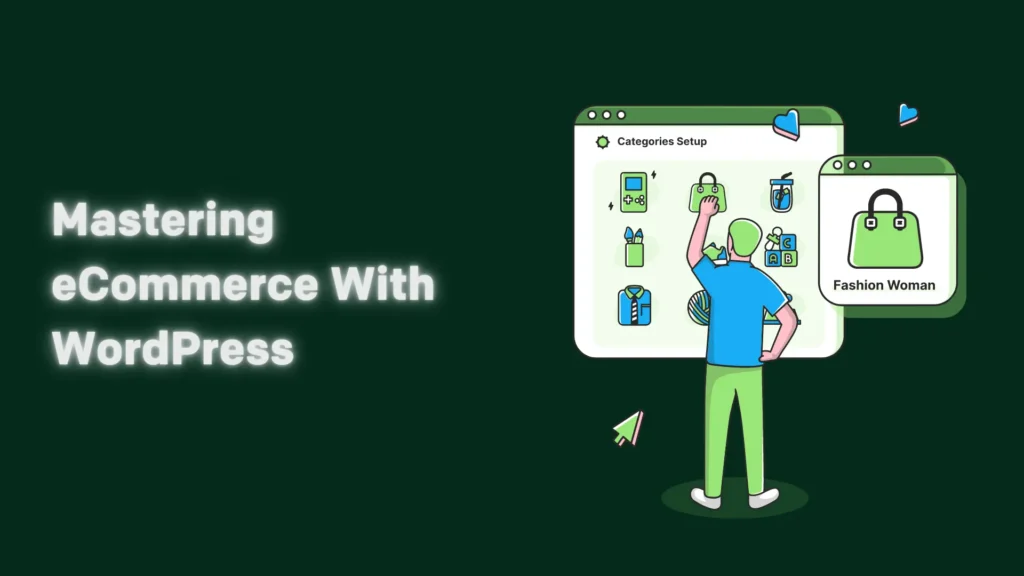
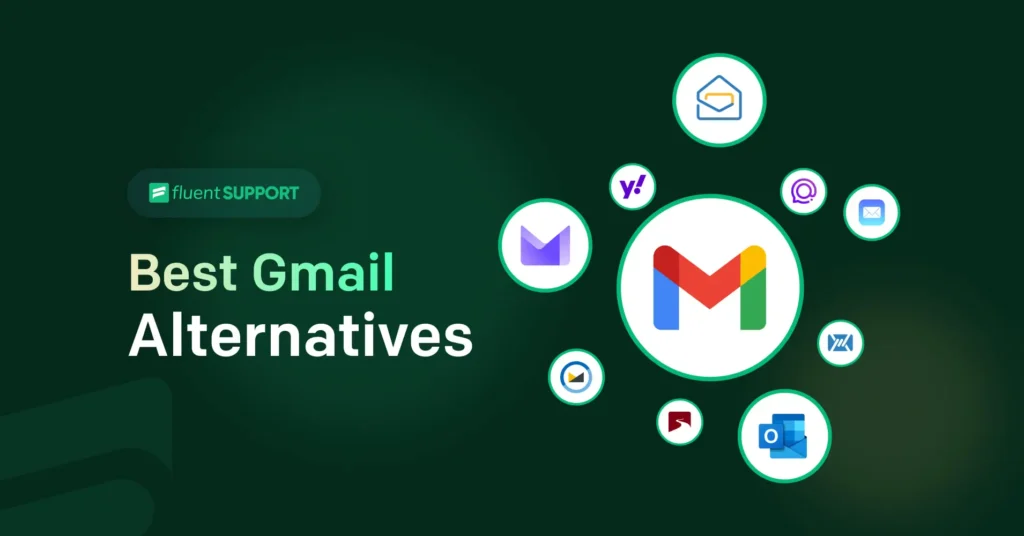
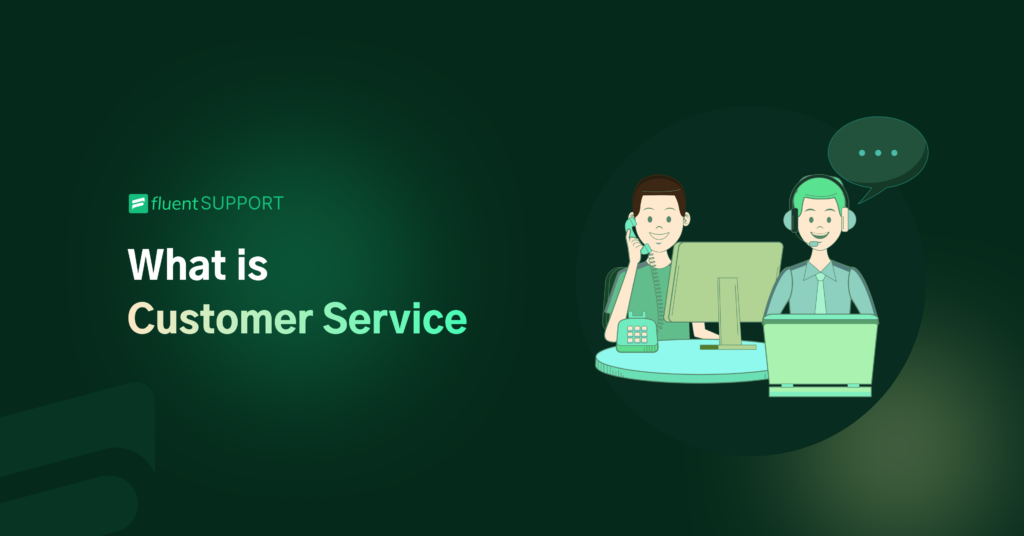
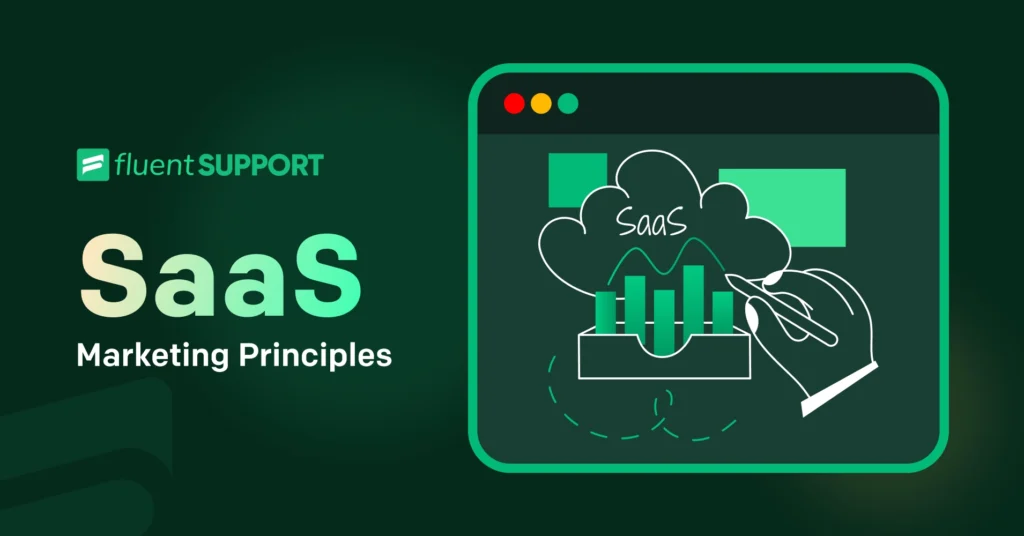
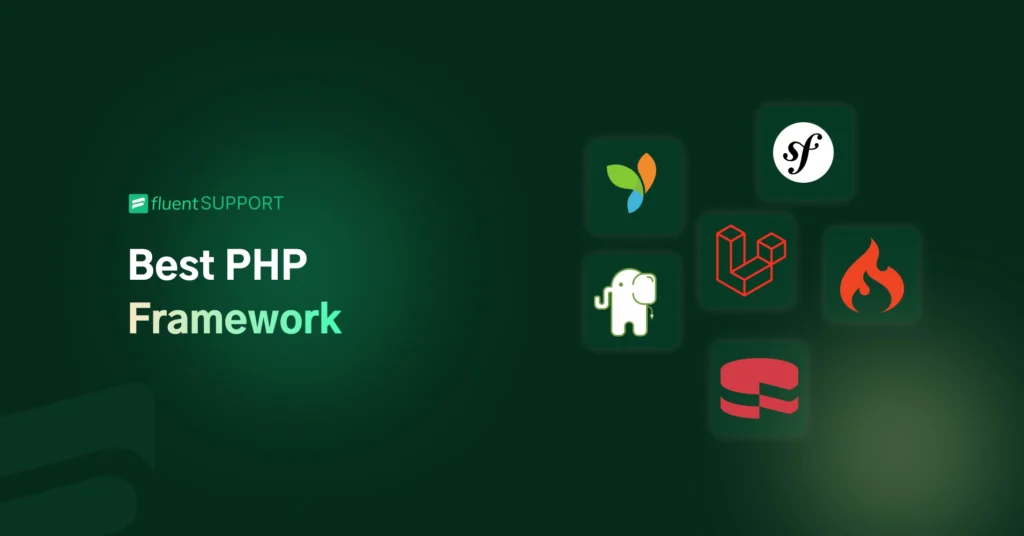
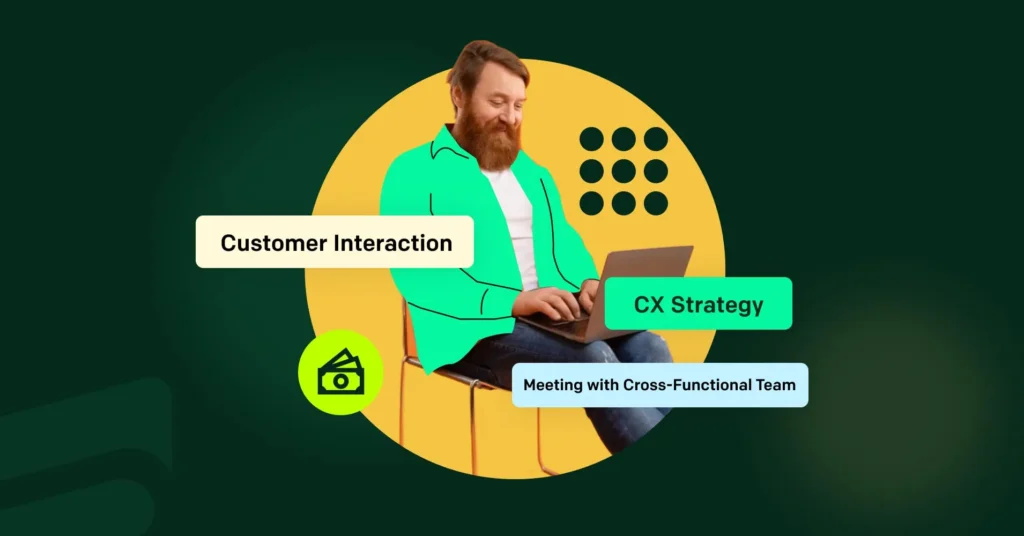
Leave a Reply